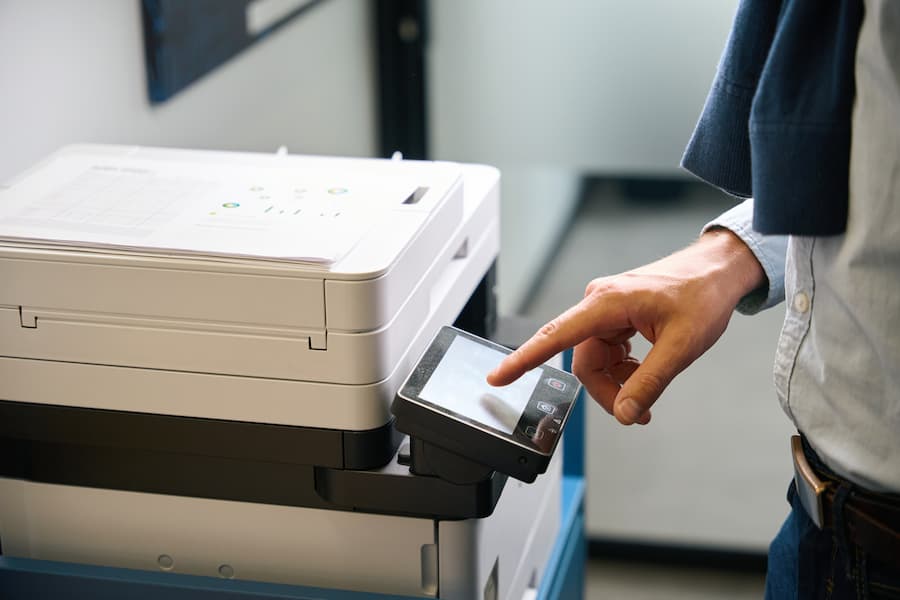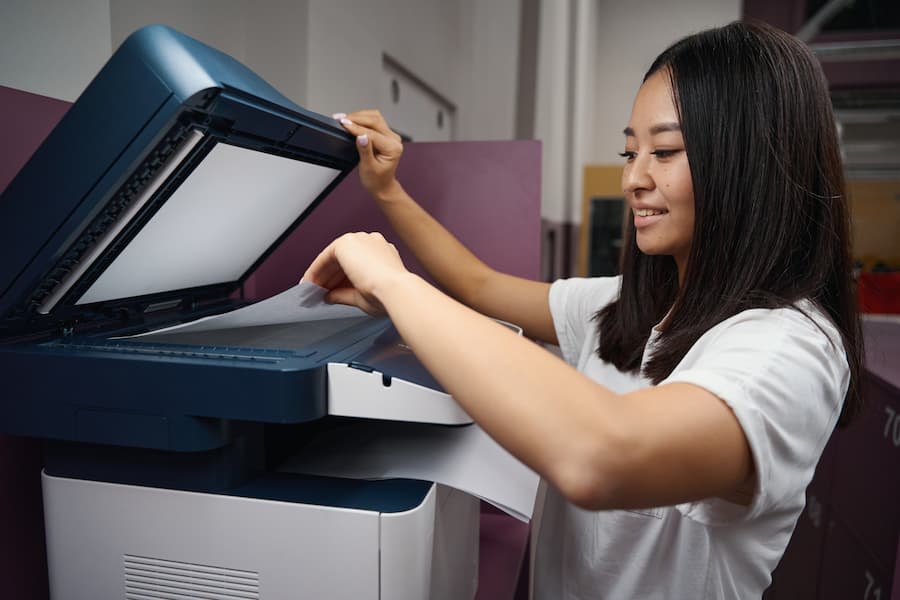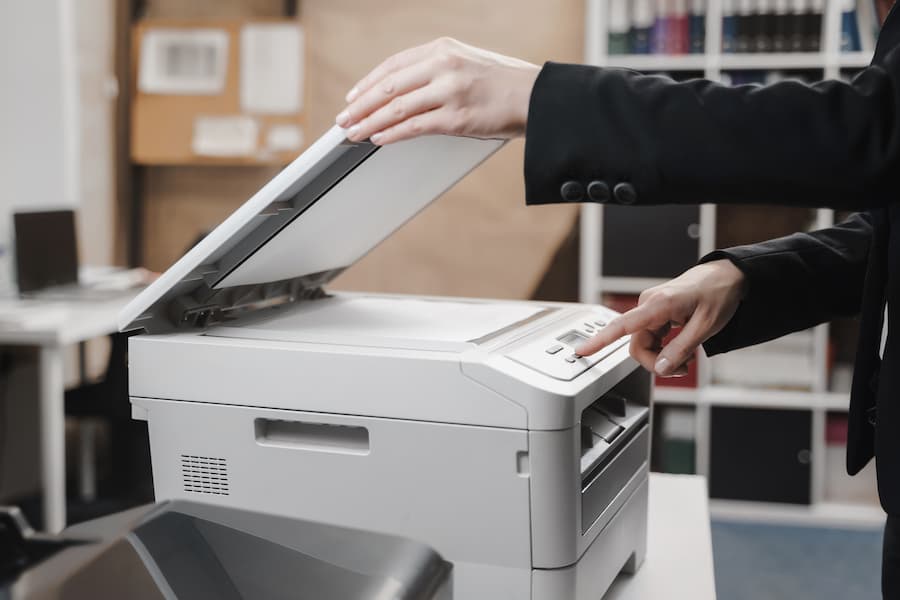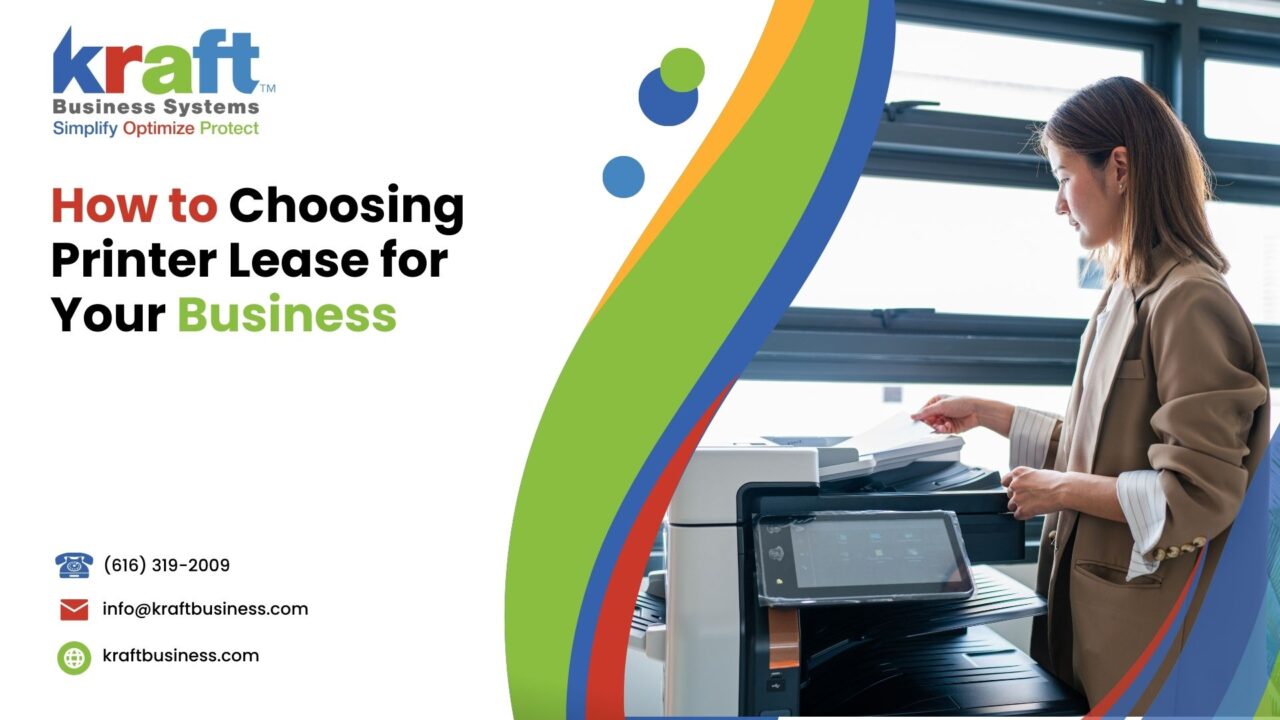Choosing Printer Lease
Choosingprinter lease for your business is a critical decision that can impact your operational efficiency, financial health, and overall productivity. Printer leasing has become increasingly popular among businesses of all sizes due to its numerous benefits, including cost savings, access to the latest technology, and flexible terms.
This article will guide you through the essential aspects of printer leasing, helping you make an informed decision that aligns with your business needs and goals.

Printer Leasing for Business Operations
Understanding Printer Leasing
Printer leasing involves a business entering into an agreement with a leasing company to rent a printer or copier for a specified period, usually ranging from one to five years. Unlike purchasing a printer outright, leasing allows businesses to spread the cost over the lease term, which can be more manageable for cash flow.
A copier lease operates similarly, allowing businesses to lease multifunction copiers that can handle various tasks such as printing, scanning, copying, and faxing. These leases often include maintenance and service agreements, providing comprehensive support for the leased equipment.
Printer Leasing for Business Operations
Benefits of Leasing a Printer or Copier
Leasing a printer or copier offers several advantages that make it an attractive option for many businesses. One of the primary benefits is cost savings. Leasing eliminates the need for a significant upfront investment, allowing businesses to preserve their capital for other critical expenses. This is particularly beneficial for small and medium-sized enterprises (SMEs) that may not have the budget to purchase expensive office equipment outright.
Another key advantage is cash flow management. With leasing, businesses can spread the cost of the printer over the lease term, making it easier to manage monthly expenses. This predictable expense structure can simplify budgeting and financial planning.
Leasing also provides access to the latest office equipment and technology. As technology evolves, businesses that lease printers can upgrade to newer models at the end of the lease term, ensuring they always have access to the most efficient and advanced devices. This can lead to increased productivity and reduced downtime.
Moreover, many leasing agreements include managed print services and maintenance support. This means the leasing company handles regular maintenance, repairs, and sometimes even supplies, freeing up your IT staff to focus on other critical tasks. Managed print services can optimize your printing environment, reduce waste, and improve efficiency.
Printer Leasing for Business Operations
Types of Printer Lease Agreements
There are several types of printer lease agreements, each with its own terms and conditions. The most common types are:
- Fair Market Value (FMV) Lease: Also known as an operating lease, this option allows businesses to lease a printer for a lower monthly payment. At the end of the lease term, you have the option to purchase the printer at its fair market value, return it, or upgrade to a newer model.
- Dollar Buyout Lease: This lease option involves higher monthly payments but gives you the option to purchase the printer for a nominal amount, usually one dollar, at the end of the lease term. This type of lease is more akin to a financing arrangement.
- Operating Lease: Similar to an FMV lease, an operating lease allows businesses to use the printer without taking ownership. At the end of the lease term, you can return the printer, continue leasing, or upgrade to a newer model.
Understanding the key components of a lease agreement is crucial. These components typically include the lease term (length of the lease), monthly lease payments, conditions of the lease, and end-of-lease options. The lease term can range from 12 to 60 months, depending on your business needs and the leasing company’s offerings. It’s important to carefully review the conditions of the lease to ensure there are no hidden fees or restrictive clauses.
Printer Leasing for Business Operations
Choosing the Right Printer or Copier for Lease
Selecting the right printer or copier for your business involves assessing your specific printing needs. Consider factors such as the volume of printing, types of documents, required features (e.g., color printing, duplexing, scanning), and the number of users. A thorough assessment will help you determine whether you need a basic printer, a multifunction printer, or a high-capacity copier.

Once you have a clear understanding of your needs, you can evaluate the total cost of leasing. This includes not only the monthly lease payments but also additional costs such as maintenance, supplies, and potential overage fees for exceeding print volume limits. Comparing the costs of leasing versus buying is essential to determine the most cost-effective option for your business.
When choosing a copier or printer leasing company, consider factors such as the company’s reputation, customer service, and the terms of their leasing agreements. A reliable leasing company should offer flexible lease options, transparent terms, and comprehensive support. Reading reviews and seeking recommendations from other businesses can help you make an informed decision.
Printer Leasing for Business Operations
Printer Leasing Process
The process of leasing a printer involves several steps, beginning with identifying your business needs and budget. Once you have a clear idea of what you’re looking for, you can start researching and comparing leasing companies. Requesting quotes from multiple leasing companies will give you a better understanding of the market rates and available options.
Negotiating lease terms is a critical step in the leasing process. Be sure to discuss and agree upon key aspects such as the lease term, monthly payments, maintenance and service agreements, and end-of-lease options. Understanding the lease contract thoroughly is essential to avoid any surprises later on. Pay close attention to the lease rate, which should be competitive and within your budget.
It can be beneficial to invite leasing companies to bid for your business. This competitive approach can help you secure better terms and lower costs. When selecting a leasing partner, consider their experience, customer service, and flexibility in accommodating your business needs. A good leasing partner should provide a smooth leasing experience and be responsive to any issues that arise during the lease term.
Printer Leasing for Business Operations
Managing Your Printer Lease
Once you have selected and signed a lease agreement for a printer, managing the lease effectively is crucial to maximizing its benefits. Regular maintenance and support are typically included in managed print services offered by leasing companies. These services ensure that your printer remains in optimal condition, reducing the likelihood of downtime and maintaining productivity.

Leasing allows for easy upgrades to new printer models. As technology advances, you may find that newer printers offer improved features and efficiencies. Most lease agreements provide options to upgrade at the end of the lease term, allowing your business to stay current with the latest office equipment without incurring additional upfront costs.
It’s important to ensure that the leased equipment meets your business objectives. Regularly assess whether the printer is fulfilling your business needs in terms of print volume, quality, and functionality. Communicate with your leasing partner to address any issues promptly and to explore upgrade options if necessary.
Printer Leasing for Business Operations
Financial Considerations of Leasing Printers
Leasing a printer impacts your business’s financials in several ways. One of the primary advantages is the positive effect on cash flow. By spreading the cost over the lease term, you avoid a significant upfront investment, freeing up capital for other business expenses. This predictable monthly expense structure simplifies budgeting and financial planning.
Leasing can also offer tax benefits. In many cases, lease payments are considered a business expense and can be deducted from taxable income. Consult with a tax advisor to understand the specific tax implications for your business.
Comparing the total cost of leasing versus buying is essential. While leasing may have lower initial costs, the total cost over the lease term can sometimes be higher than purchasing a printer outright. However, when considering the additional benefits such as maintenance and managed print services, leasing often provides a comprehensive and hassle-free solution.
Printer Leasing for Business Operations
Coping with Cons of Leasing a Printer
While leasing offers numerous benefits, it’s important to be aware of potential downsides. One limitation is that you never own the equipment outright. At the end of the lease term, you must either return the printer, purchase it, or enter into a new lease agreement. This lack of ownership can be a drawback for businesses that prefer long-term stability.
Another potential downside is the cumulative cost. Over time, leasing payments can add up to more than the cost of purchasing a printer. However, this is often offset by the benefits of included maintenance and the ability to upgrade to newer models.
To mitigate these drawbacks, choose a leasing agreement that aligns with your business goals. Negotiate favorable terms, including flexible end-of-lease options, and ensure that the lease agreement provides clear guidelines on maintenance and support.
Printer Leasing for Business Operations
Legal and Contractual Aspects
Understanding the legal and contractual aspects of a copier lease agreement is crucial. Important clauses to pay attention to include lease term, monthly payments, maintenance responsibilities, and end-of-lease options. Carefully review the lease contract to ensure there are no hidden fees or restrictive clauses.
One key aspect to understand is property rights. The leased printer remains the property of the leasing company throughout the lease term. At the end of the lease, you may have the option to purchase the printer, but until then, it is owned by the leasing company.
Conditions for early lease termination and penalties should also be clearly outlined in the lease agreement. If your business needs change and you need to terminate the lease early, understanding these conditions can help you avoid unexpected costs.
Printer Leasing for Business Operations
Making the Final Decision
Deciding whether to lease or buy a printer involves considering several factors. Assess your business’s financial situation, printing needs, and long-term goals. If conserving capital and maintaining cash flow are priorities, leasing may be the better option. However, if long-term ownership and lower overall costs are more important, purchasing might be preferable.
Align the decision with your business technology goals. If staying current with the latest technology is critical, leasing provides the flexibility to upgrade regularly. If stability and long-term ownership are more important, purchasing may be the better choice.
Printer Leasing for Business Operations
What People May Also Ask
Is it better to lease or buy a printer?
Leasing is often better for businesses looking to conserve capital, manage cash flow, and access the latest technology without a significant upfront investment. Buying may be more cost-effective in the long run if you plan to use the printer for many years and have the capital available.
What are the benefits of leasing a printer for business?
Leasing offers several benefits, including cost savings, predictable monthly expenses, access to the latest technology, managed print services, and reduced maintenance responsibilities. It also provides flexibility to upgrade equipment as your business grows.
How long is a typical printer lease agreement?
Printer lease agreements typically range from 12 to 60 months. The ideal lease term depends on your business needs and the leasing company's offerings. Shorter terms provide more flexibility to upgrade, while longer terms can lower monthly payments.
What happens at the end of the lease term?
At the end of the lease term, you usually have several options: return the printer, purchase it at the fair market value or a predetermined price, or upgrade to a newer model and enter into a new lease agreement. The specific options will depend on the type of lease you have.
How to choose the right leasing company?
Choosing the right leasing company involves evaluating their reputation, customer service, lease terms, and support services. Look for a company that offers flexible lease options, transparent terms, and responsive customer support. Reading reviews and seeking recommendations can also help you find a reliable leasing partner.
Printer Leasing for Business Operations
Conclusion
Choosing a printer lease for your business involves evaluating numerous factors, from financial considerations to the benefits of managed print services. Leasing offers flexibility, cost savings, and access to the latest technology, making it an attractive option for many businesses.
However, it’s essential to carefully review lease agreements, understand the total cost of leasing, and select a reputable leasing partner.






